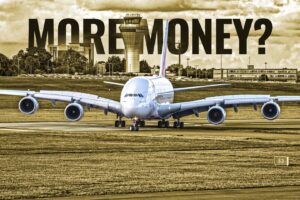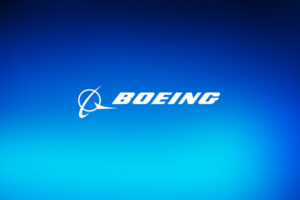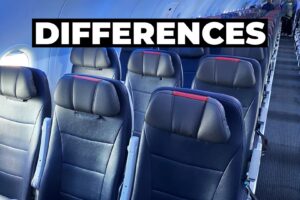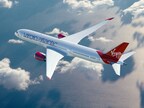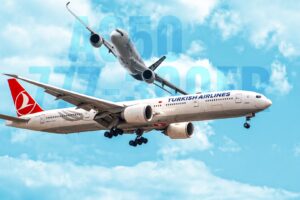
Boeing released this second quarter statement:
Financial results continue to be significantly impacted by COVID-19 and the 737 MAX grounding
Revenue of $11.8 billion, GAAP loss per share of ($4.20) and core (non-GAAP)* loss per share of ($4.79)
Operating cash flow of ($5.3) billion; cash and marketable securities of $32.4 billion
Total backlog of $409 billion, including more than 4,500 commercial airplanes
Table 1. Summary Financial Results
Second Quarter
First Half
(Dollars in Millions, except per share data)
2020
2019
Change
2020
2019
Change
Revenues
$11,807
$15,751
(25)%
$28,715
$38,668
(26)%
GAAP
Loss From Operations
($2,964)
($3,380)
NM
($4,317)
($1,030)
NM
Operating Margin
(25.1)%
(21.5)%
NM
(15.0)%
(2.7)%
NM
Net Loss
($2,395)
($2,942)
NM
($3,036)
($793)
NM
Loss Per Share
($4.20)
($5.21)
NM
($5.31)
($1.40)
NM
Operating Cash Flow
($5,280)
($590)
NM
($9,582)
$2,198
NM
Non-GAAP*
Core Operating Loss
($3,319)
($3,745)
NM
($5,019)
($1,759)
NM
Core Operating Margin
(28.1)%
(23.8)%
NM
(17.5)%
(4.5)%
NM
Core Loss Per Share
($4.79)
($5.82)
NM
($6.49)
($2.60)
NM
*Non-GAAP measure; complete definitions of Boeing’s non-GAAP measures are on page 6, “Non-GAAP Measures Disclosures.”
The Boeing Company reported second-quarter revenue of $11.8 billion, GAAP loss per share of ($4.20) and core loss per share (non-GAAP)* of ($4.79), primarily reflecting the impacts of COVID-19 and the 737 MAX grounding (Table 1). Boeing recorded operating cash flow of ($5.3) billion.
“We remained focused on the health of our employees and communities while proactively taking action to navigate the unprecedented commercial market impacts from the COVID-19 pandemic,” said Boeing President and Chief Executive Officer Dave Calhoun. “We’re working closely with our customers, suppliers and global partners to manage the challenges to our industry, bridge to recovery and rebuild to be stronger on the other side.”
In the second quarter, Boeing restarted production operations across key sites following temporary pauses to protect its workforce and introduce rigorous new health and safety procedures. Despite the challenges, Boeing continued to deliver across key commercial, defense, space and services programs. The company also resumed early stages of production on the 737 program with a focus on safety, quality and operational excellence. Following the lead of global regulators, Boeing made steady progress toward the safe return to service of the 737, including completion of FAA certification flight tests.
To align to the sharp reduction in commercial market demand in light of COVID-19, the company is taking several actions including further adjusting commercial airplane production rates and reducing employment levels.
“The diversity of our balanced portfolio and our government services, defense and space programs provide some critical stability for us in the near-term as we take tough but necessary steps to adapt for new market realities,” Calhoun said. “We are taking the right action to ensure we’re well positioned for the future by strengthening our culture, improving transparency, rebuilding trust and transforming our business to become a better, more sustainable Boeing. Air travel has always proven to be resilient – and so has Boeing.”
Table 2. Cash Flow
Second Quarter
First Half
(Millions)
2020
2019
2020
2019
Operating Cash Flow
($5,280)
($590)
($9,582)
$2,198
Less Additions to Property, Plant & Equipment
($348)
($421)
($776)
($922)
Free Cash Flow*
($5,628)
($1,011)
($10,358)
$1,276
*Non-GAAP measure; complete definitions of Boeing’s non-GAAP measures are on page 6, “Non-GAAP Measures Disclosures.”
Operating cash flow was ($5.3) billion in the quarter, primarily reflecting lower commercial deliveries and services volume due to COVID-19 and the 737 MAX grounding, as well as timing of receipts and expenditures (Table 2).
Table 3. Cash, Marketable Securities and Debt Balances
Quarter-End
(Billions)
Q2 20
Q1 20
Cash
$20.0
$15.0
Marketable Securities1
$12.4
$0.5
Total
$32.4
$15.5
Debt Balances:
The Boeing Company, net of intercompany loans to BCC
$59.5
$36.9
Boeing Capital, including intercompany loans
$1.9
$2.0
Total Consolidated Debt
$61.4
$38.9
1Marketable securities consists primarily of time deposits due within one year classified as “short-term investments.”
Cash and investments in marketable securities increased to $32.4 billion, compared to $15.5 billion at the beginning of the quarter, driven by the issuance of new debt (Table 3). Debt was $61.4 billion, up from $38.9 billion at the beginning of the quarter due to the issuance of new debt, partially offset by repayment of maturing debt.
Total company backlog at quarter-end was $409 billion.
Segment Results
Commercial Airplanes
Table 4. Commercial Airplanes
Second Quarter
First Half
(Dollars in Millions)
2020
2019
Change
2020
2019
Change
Commercial Airplanes Deliveries
20
90
(78)%
70
239
(71)%
Revenues
$1,633
$4,722
(65)%
$7,838
$16,544
(53)%
Loss from Operations
($2,762)
($4,946)
NM
($4,830)
($3,773)
NM
Operating Margin
(169.1)%
(104.7)%
NM
(61.6)%
(22.8)%
NM
Commercial Airplanes second-quarter revenue and operating margin decreased reflecting lower delivery volume, partially offset by a lower 737 MAX customer consideration charge of $551 million in the quarter compared to a $5.6 billion charge in the same period last year. Second-quarter operating margin was also negatively impacted by $712 million of abnormal production costs related to the 737 program, $468 million of severance expense and $133 million of abnormal production costs from the temporary suspension of operations in response to COVID-19.
The 737 program resumed early stages of production in May and expects to continue to produce at low rates for the remainder of 2020. The COVID-19 pandemic has significantly impacted air travel and reduced near-term demand, resulting in lower production and delivery rate assumptions. Commercial Airplanes expects to gradually increase the 737 production rate to 31 per month by the beginning of 2022, with further gradual increases to correspond with market demand. Estimated potential concessions and other considerations to customers related to the 737 MAX grounding increased by $551 million in the quarter. There was no material change to estimated abnormal production costs.
Commercial Airplanes has further updated its production rate assumptions this quarter to reflect impacts of COVID-19 on its demand outlook, and will continue to assess them on an ongoing basis. The 787 production rate will be reduced to 6 per month in 2021. The 777/777X combined production rate will be gradually reduced to 2 per month in 2021, with 777X first delivery targeted for 2022. At this time, production rate assumptions have not changed on the 767 and 747 programs.
Commercial Airplanes delivered 20 airplanes during the quarter, and backlog included over 4,500 airplanes valued at $326 billion.
Defense, Space & Security
Table 5. Defense, Space & Security
Second Quarter
First Half
(Dollars in Millions)
2020
2019
Change
2020
2019
Change
Revenues
$6,588
$6,579
—
$12,630
$13,166
(4)%
Earnings from Operations
$600
$975
(38)%
$409
$1,827
(78)%
Operating Margin
9.1%
14.8%
(5.7) Pts
3.2%
13.9%
(10.7) Pts
Defense, Space & Security second-quarter revenue was $6.6 billion, reflecting COVID-19 impact on derivative aircraft programs, partially offset by higher volume across the remainder of the portfolio (Table 5). Second-quarter operating margin decreased to 9.1 percent primarily due to a gain on sale of property in the second quarter of 2019 and a $151 million KC-46A Tanker charge primarily driven by additional fixed cost allocation resulting from lower commercial airplane production volume due to COVID-19.
During the quarter, Defense, Space & Security received an award for three additional MQ-25 unmanned aerial refueling aircraft for the U.S. Navy, as well as contracts for Cruise Missile Systems for the U.S. Navy and a contract for 24 AH-64E Apache helicopters for the Kingdom of Morocco. Defense, Space & Security completed Critical Design Review for the T-7A advanced trainer, achieved first flight and delivery of the F/A-18 U.S. Navy Block III Super Hornet, and achieved first flight of the F-15 Qatar Advanced aircraft. Defense, Space & Security also delivered the 100th U.S. Navy P-8A Poseidon, the 400th V-22 Osprey, and the 2,500th AH-64 Apache.
Backlog at Defense, Space & Security was $64 billion, of which 31 percent represents orders from customers outside the U.S.
Global Services
Table 6. Global Services
Second Quarter
First Half
(Dollars in Millions)
2020
2019
Change
2020
2019
Change
Revenues
$3,488
$4,543
(23)%
$8,116
$9,162
(11)%
(Loss)/Earnings from Operations
($672)
$687
NM
$36
$1,340
NM
Operating Margin
(19.3)%
15.1%
NM
0.4%
14.6%
NM
Global Services second-quarter revenue decreased to $3.5 billion, driven by lower commercial services volume due to COVID-19, partially offset by higher government services volume (Table 6). Second-quarter operating margin decreased to (19.3) percent primarily due to lower commercial services volume, less favorable mix of products and services, and $923 million of charges related to asset impairments and severance costs as a result of the COVID-19 market environment.
During the quarter, Global Services was awarded a contract modification for P-8A integrated logistics support for the U.S. Navy. Global Services captured an order for four 767-300 freighter conversions for DHL and was awarded a contract for F-15 pre-delivery training support for the Qatar Emiri Air Force. Global Services also delivered the first F/A-18 Super Hornet test aircraft modified for the U.S. Navy Blue Angels.
Additional Financial Information
Table 7. Additional Financial Information
Second Quarter
First Half
(Dollars in Millions)
2020
2019
2020
2019
Revenues
Boeing Capital
$69
$75
$134
$141
Unallocated items, eliminations and other
$29
($168)
($3)
($345)
Earnings from Operations
Boeing Capital
($7)
$37
$17
$57
FAS/CAS service cost adjustment
$355
$365
$702
$729
Other unallocated items and eliminations
($478)
($498)
($651)
($1,210)
Other income, net
$94
$107
$206
$213
Interest and debt expense
($553)
($154)
($815)
($277)
Effective tax rate
30.0%
14.2%
38.4%
27.5%
At quarter-end, Boeing Capital’s net portfolio balance was $2.1 billion. Revenue from other unallocated items and eliminations increased primarily due to reserves related to cost accounting litigation recorded in the second quarter of 2019. Interest and debt expense increased due to higher debt balances. The second quarter effective tax rate reflects tax benefits related to the 5 year net operating loss carryback provision in the Coronavirus Aid, Relief, and Economic Security (CARES) Act as well as the impact of pre-tax losses.
Like this:
Like Loading…

